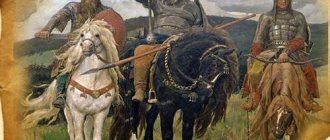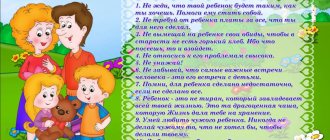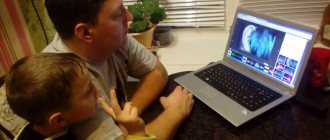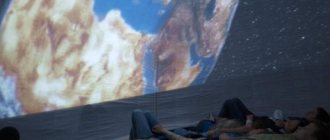Child-parent project for children 6-7 years old “The Secret of Creating Cartoons”
Introduction
What do children love most in the world? Well, of course, cartoons! Our childhood is closely connected with cartoons. In the context of the modernization of education and the transition to the Federal State Educational Standard for Preschool Education, the issue of creating conditions in kindergarten that would contribute to the disclosure of the potential and creative realization of each child, and also satisfy the desire of parents of kindergarten students to receive a quality education and harmonious development of their children, becomes relevant. Creating a cartoon and even a small cartoon studio on the basis of a preschool educational organization fully meets this requirement. A cartoon is a fairy-tale world that helps a child develop, fantasize, learn to empathize with characters, learn rules of behavior, and learn to be friends. Cartoons are a very effective tool for child development. Only if it's a good cartoon. With their help, you can engage your child in the learning process. And we also really love watching cartoons. We have also long dreamed of creating our own cartoon. But how to create it? Where to start? What are the secrets of creating cartoons?
Duration: 1 week.
Project type: research and creative.
Participants: child, parents.
Child's age: 6 - 7 years.
Relevance: All teachers know how important it is for children to be interested in engaging in one activity or another, so that their faces radiate joy and their eyes glow with delight. How to achieve such an effect? One of the most important conditions for the successful development of children's creativity is diversity and variability in working with children. The novelty of the environment, a variety of materials, new and original technologies interesting for children, the opportunity to choose - this is what helps prevent monotony and boredom in children's activities, and ensures the liveliness and spontaneity of children's perception and activity. It is important to create a new situation each time so that children, on the one hand, can apply previously learned skills, and on the other, look for new solutions and creative approaches. In search of methods to promote the development of a child’s creative thinking, I turned to animation. Project goals: Reveal the secrets of creating cartoons. Create a cartoon with your own hands.
Objectives: To introduce children to the history of the origin and development of animation.
- Introduce children to the technology of creating animated films.
- Expand children's knowledge about professions: screenwriter, director, animator, cameraman, sound engineer.
- Develop coherent speech skills.
- To develop stable skills of collective cooperation in preschoolers.
Research problem:
| What do we know | What do we want to know | Where can we find out? |
| — Both adults and children love cartoons — There are different types of cartoons — Are cartoons created by a director? | — Who comes up with cartoons? — What types of cartoons are there? — What profession do people work on creating cartoons? | - ask adults - find out from teachers, watch an educational film - ask adults, read in a book |
Practical significance of the project
The experience gained by children during the implementation of the project, through independent practical activities, contributes to the further development of cognitive thinking and creative abilities of children in the process of research activities.
Description of the stages of work on the project
| Stages | Contents of the stage |
| Stage I Preparatory | Statement of the problem, determination of the goals and objectives of the research work. |
| Selection and analysis of information on this topic. | |
| Conversation “What do we know about animation?” | |
| Watching the informational and educational film “The History of Animation.” | |
| Stage II Main | Solving problematic questions: “What kinds of cartoons are there?”, “How are cartoons made now?”, “Who works on creating cartoons?” |
| Reading the Nenets fairy tale “The Polar Bear and the Brown Bear” | |
| Educational and game program “Journey to the country of Multi-Pultia”. | |
| Experimental activity. Creating cartoon characters | |
| Master class “Games of the Peoples of Yamal” | |
| GCD Drawing “We decorate boots and mittens with patterns” | |
| GCD for sculpting “Favorite cartoon characters” | |
| The process of creating a cartoon based on Nenets fairy tales | |
| Preparation of defense. | |
| Stage III Final | Design of the project folder. |
| Presentation of research results. Project protection. |
1. Preparatory stage.
Determine the main areas of work. Systematization of material on this issue. Studying scientific literature on this issue.
2. Main stage. Day 1 - Selection of fiction, encyclopedic literature. Day 2 – Work with parents (conversations to create an exhibition of drawings of my favorite cartoon characters, making a poster).
Day 3 – Choosing the type of cartoon and the theme of the cartoon. Day 4 – Distribution of professional roles.
Day 5 - Making a cartoon background.
Day 6 – Making cartoon characters. Day 7 – Creating a cartoon.
3. Final stage.
7 day - prepare the collected material and arrange it in the form of an exhibition and multimedia presentation.
Conclusion
During the work, we got acquainted with the history of the development of animation and learned that:
More than 100 years have passed since the release of the first cartoon, but their popularity does not fade.
We learned what types of animation exist and that cartoons can be classified: by duration, by method of creation.
Animation is a collective art, time-consuming and very labor-intensive, despite all modern technologies. To create a cartoon, you need a whole team of specialists: a producer, screenwriters, animator director, animators, junior animators, artists, a cameraman, a sound engineer, actors for voicing characters.
We studied the process of creating a cartoon and realized that knowing the basic secrets of creating cartoons, you can create your own cartoon.
Thus, we were able to achieve the goal of our research. The hypothesis we put forward at the beginning of the study was confirmed: with the support of adults, we were able to create our first cartoon.
The knowledge gained during the study made it possible to increase the children’s interest in the art of animation. In the future, we dream of creating many more cartoons in different techniques.
As a result of this project, we learned a lot about how the cartoons we all love are created.
Conclusion: with available technical support, anyone can make a cartoon, but shooting cartoons is a very painstaking job!
Bibliographic list of sources used:
1. Timofeeva L. L. Project method in kindergarten. "Cartoon with your own hands." – St. Petersburg. PUBLISHING HOUSE “CHILDHOOD-PRESS” LLC, 2011.
2. Great encyclopedia of knowledge. Publishing house Eksmo.2010
3. Internet resources
wikipedia.org
Video.yandex.ru#how to shoot a cartoon with a camera#
veriochen.livejournal.com/121698html




